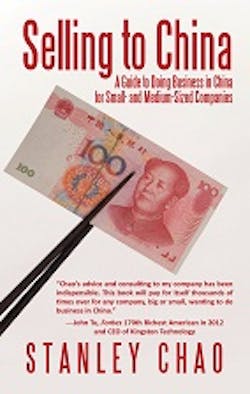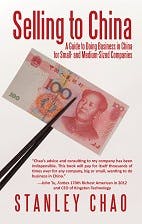China’s market may be an alternative for many small- and medium-sized businesses that are seeking revenue and profit growth especially when we here in the U.S. are suffering from economic stagnation, continued high unemployment and a lack of direction from the federal government. But who has the money to travel to China to investigate the market or hire new employees to handle China?
Not so fast. Here’s an inexpensive and fairly accurate way to determine whether your products or services can succeed in China without having to get on an airplane or spend thousands of dollars doing a market study. Simply answer the four questions below and if you can answer three out of the four positively then your chances of succeeding in China may be pretty good. Of course, one can’t tell for sure until a deeper dive is done, but I’ve had a better than 80% accuracy with this initial, low-budget analysis.
Do your products or services have at least 25% in cost savings or have a nine-to-12-month payback period for your customers?
With a calculator and industry-related data like labor rates and fuel costs in hand, I meticulously punch out payback analysis for promising foreign industrial equipment, accounting software packages, energy-saving air conditioners, and hand-held medical devices. Unfortunately, most don’t make the cut, having payback periods of well over 4 years.
That’s not to say a market does not exist for these longer-payback items: large Chinese state-owned companies may have an interest, as they have longer-term business outlooks. But Western small businesses are most likely to sell to other Chinese small businesses and they just don’t have the appetite for high-capital, long payback investments.
Do your products or services not have local competitors? Can they not easily be pirated?
You must absolutely make sure your products cannot be copied in China. Legal protection through trademarks or patents is not a remedy. There must be a foolproof method that ensures that your product cannot be physically copied, pirated, or altered. Without these protections, don’t even bother trying to sell to China. In fact, you could risk your existing sales outside of China, as the Chinese will find ways to penetrate international markets with pirated products.
I introduced a well-known company’s line of torque power tools to China in the early 2000s. After 2 years, we started seeing serial numbers on returned tools that didn’t match our records. At least four Chinese copycat companies were making, selling and, worst of all, exporting to the U.S. the exact same product lines.
Do your products or services have the China sales potential to make up 20% to 25% of your total revenue within 2 to 5 years?
I see no reason to go to China unless the sales potential will make a great and everlasting impact on your total business. The reason is simple: too much sweat is required to succeed in China- so make it worth your while. Why do it unless it becomes a major part of your total revenue stream?
I know my “25% in 5 years” plan is subjective and each business has its own ideas as to what constitutes a big number. The main purpose in asking this question is to make businesspeople think about their long-term China strategy. Don’t ever go to China thinking you can make a quick buck. Where do you want to be in 5 years, and is it worth the undertaking to reach the goal?
Do you have products or services have a technological advancement that saves or improves lives, reduces energy consumption, or serves the present policies of the Chinese government?
Chinese hospitals want to save more lives with better medical equipment, Chinese consumers will pay more for 3-D televisions, and the Chinese government will, at almost any cost, find ways to reduce pesticides in the nation’s water supply.
The key is to find opportunities that are serving the present interests of the Chinese government since they’ll be your eventual customers via state-owned and smaller, privately-owned enterprises. Beijing is now promoting products and services in the health-care, aviation, alternative energy, clean technology, nanotechnology, aviation, oil/gas exploration and biotechnology markets.
Conclusion
I must admit that some prior knowledge of China is required to answer these questions, but it certainly can be done with some on-line research, a few phone calls to colleagues already doing business in China or a visit to a regional trade show in the United States where many Chinese companies exhibit. If the results are positive, then by all means take the next step, spend some money, and do a market study by actually visiting China and meeting potential partners, distributors and just about anybody associated with your business. You should get the full picture after such a comprehensive visit. I wish you all the best in your China endeavors.
Stanley Chao is managing director at All In Consulting, which assists companies in their Asia and China selling and outsourcing strategies. He has worked in China for over 20 years, speaks Mandarin and Japanese, and resides in Los Angeles, commuting to China monthly. This article is based on his new book, “Selling to China: A Guide to Doing Business in China for Small- and Medium-Sized Companies.”

